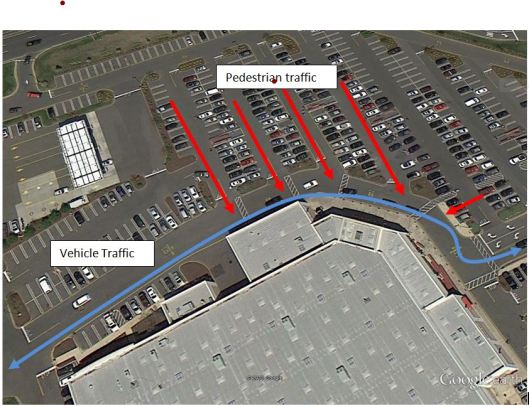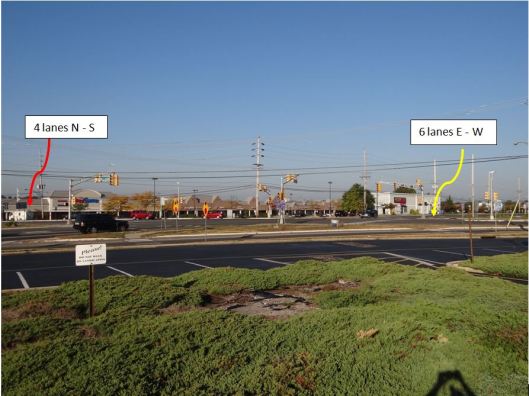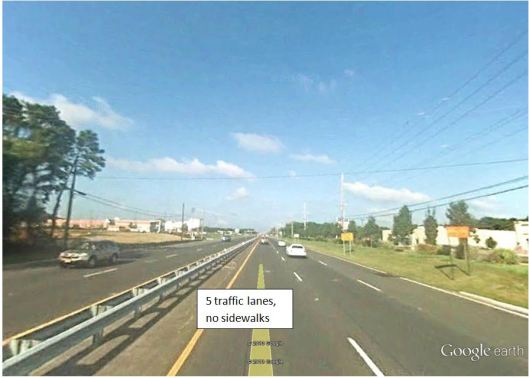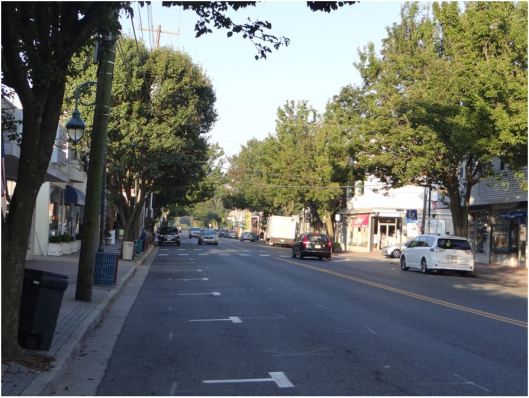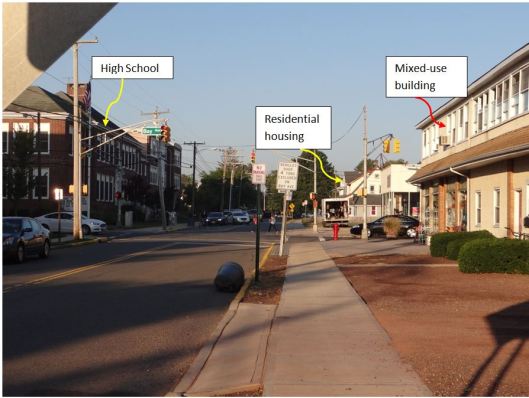Ask any American man (and quite a few American women) what their first car was and a dreamy, nostalgic look crosses over their face. Without hesitation, they can recite the age, make and model of their first car, how much they paid for it and all the quirks that made it part of their family. Planners too have a love affair with the car; in the race out of the cities and towns it was easier and cheaper to build out rather than up. As zoning regulations evolved, larger parcels of land were designated specifically for commercial, residential or industrial and the planned movement between them was always the car, (mass transit was relegated to cities and intra-city). Across the country, the car personified the American way of life; it was raised to mythological proportions in movie, song, television and of course mass advertizing.
It is time for the love affair to end; we cannot sustain the expanding waistline our cities and towns. Planners and designers must stop designing for cars and refocus their efforts on people. The Township of Brick gained another yet another, shopping plaza in 2008, situated at the corner of State Highway 70 and Shorrock Rd; it contains the usual vanilla assortment of shopper’s Mecca’s: a big-box store, office supply outlet, discount store and sporting goods warehouse. With acres of parking between the highway and the buildings some mental giant decided that there needed to be an access road bisecting the two. This creates a situation where the legions of shoppers must negotiate between incoming cars to get to their 10 gallon tubs of ice cream and 50 lb bags of cookies. Clearly, the designers deemed it more important to create easy access for the cars instead of the shoppers, adding a new wrinkle to the old caveat “Let the buyer beware.”
While this is a common configuration for shopping centers, the situation is exacerbated by the direct connection to the inflow traffic from the street. The designer and owner squandered an opportunity to create a traffic layout that allowed vehicles to enter the parking lot and pedestrians channeled into walking paths to the store.
As towns allowed the creation of these destination islands, vast swatches of land were cleared and leveled to accommodate the buildings, parking lots and roadways feeding them leaving a monotonous cacophony of single story buildings, complex intersections and tangle of utility wiring. Efforts have been made to create a unified façade but the effect is overshadowed by the sheer sprawl and lack of focal points. While, there is multi-family housing within walking distance, the shopping plaza is insulated by multiple lanes of fast moving traffic; compounded my multiple lanes of turning traffic.
Most distressing of all are the vast stretches of wooded land cleared for strip malls that line every major road. Any vestige of the natural terrain is stripped away and replaced with advertising, drainage swales, omnipresent power lines and “Lots for Sale” signs.
One town that has been able to resist the siren’s call of the developer, if only due to the constraints of geography, is Point Pleasant Beach. It has the archetypical downtown area: tree lined streets, mixed-use multi-storied storefronts bordering the sidewalks, two lane road with parallel parking and is readily identifiable as the heart of the town. Surrounded by residential housing, this business district contains: a grocery store, hardware store, stationary and clothing stores within walking distance of a good portion of the town. There are also locations that encourage social interconnecting: a coffee house, restaurants, churches and a night spot.
The local high school is situated within the town and not relegated to the outskirts allowing the students to be integral members of the community.
To be fair, both towns have their share of strengths and weakness. Brick has outlined a strategy in the 2007 Master Plan to curb strip mall development and beautify the downtown area and Point Beach has far too many antique stores for its own good and is by and large built-out.
Cities and towns have the power to reverse this auto-centric trend and return to a more eco- friendly configuration; but it takes a concerted effort and pressure from citizens to revise zoning ordinances and create an atmosphere that encourages developers to submit mixed-use, multi-storied designs where both parties can profit. Now, is the optimal time to begin this transformation, studies reported in The Atlantic and New York Times have shown that Millennial’s are not as interested in getting their driver’s license or owning cars for a variety of reasons. Coupled with the baby boomer generation now reluctantly leaving the driving scene; this creates two large groups that will benefit and use mass transit, bicycle or walk as a means to get to where they are going. We just need to shorten that distance to make it feasible.
Perhaps a copy of Robert Crumb’s “A Short History of America” should hang in every city planner’s office to serve as a conceptual reminder of the impact of poor planning.

